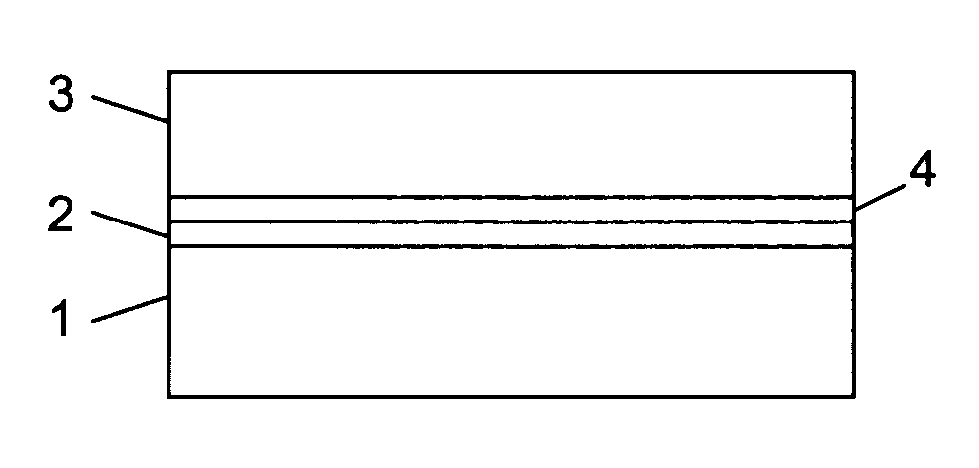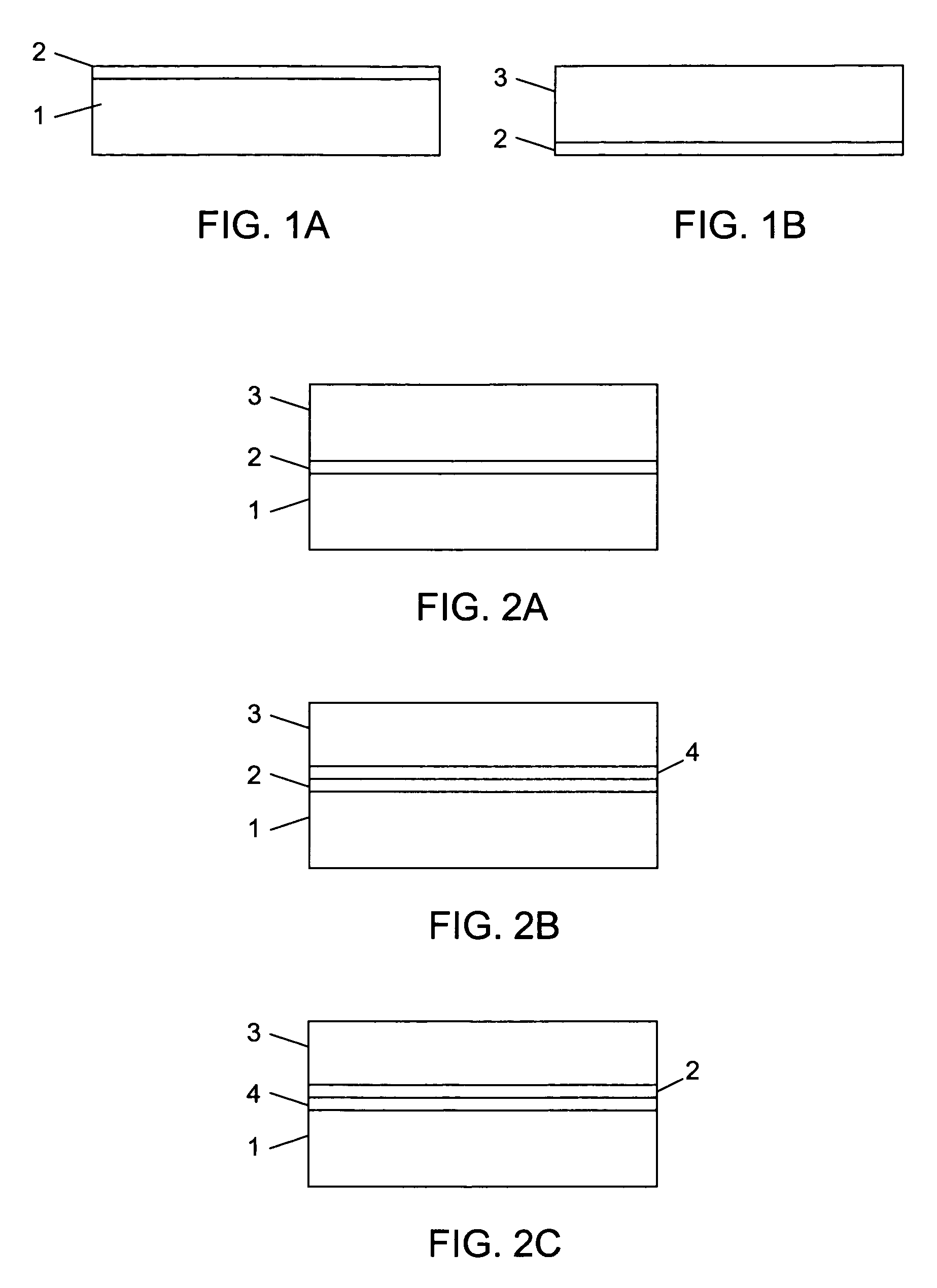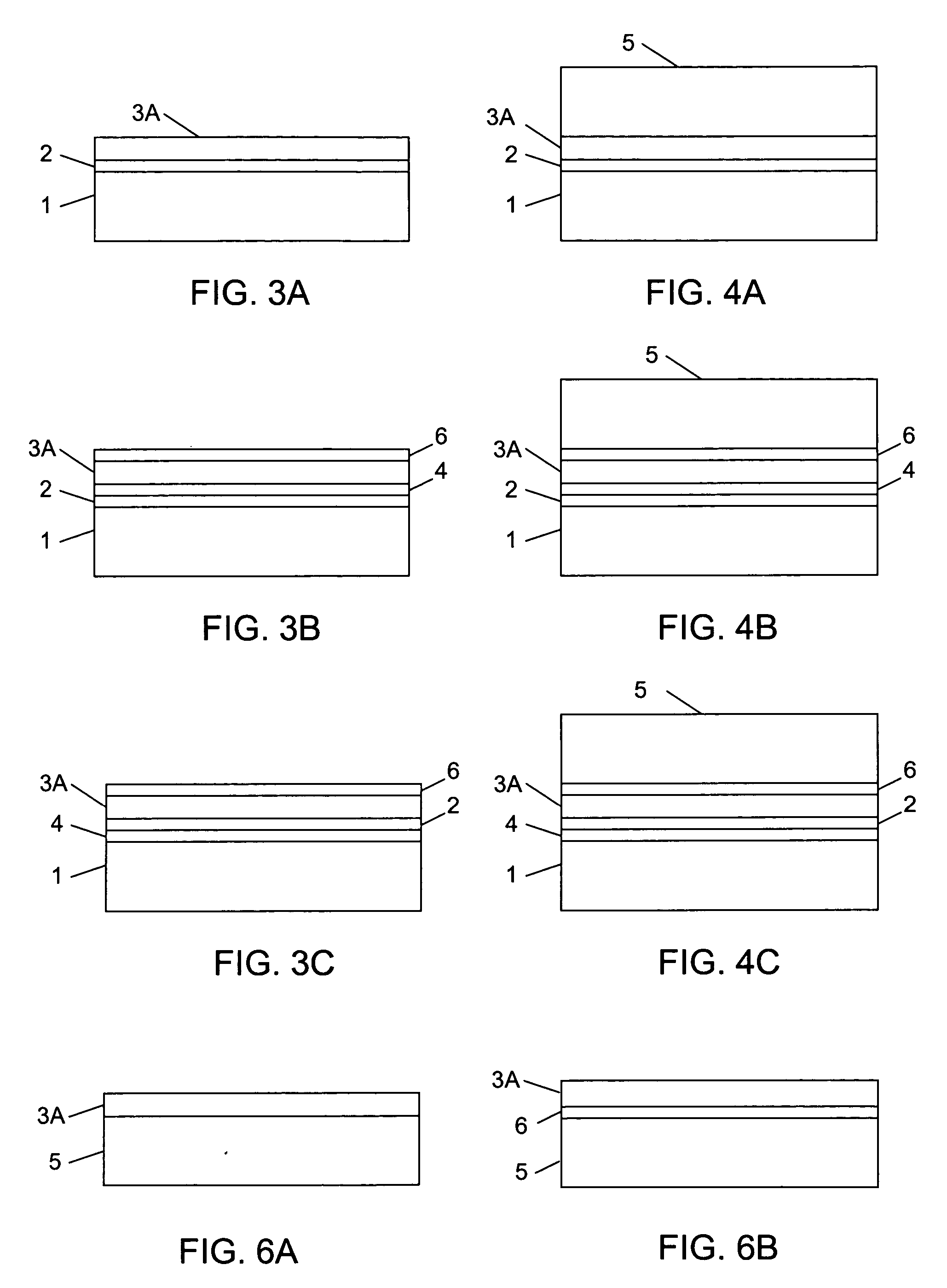Method of detachable direct bonding at low temperatures
a technology of direct bonding and detachable components, which is applied in the direction of basic electric elements, semiconductor/solid-state device manufacturing, electric devices, etc., can solve the problems of low yield, low thickness uniformity of the remaining layer, and difficult optimization of the process design needed to produce different functions on the same chip of integrated materials
- Summary
- Abstract
- Description
- Claims
- Application Information
AI Technical Summary
Benefits of technology
Problems solved by technology
Method used
Image
Examples
first example
[0059] An example of the first embodiment will now be described. An intrinsic amorphous silicon (a-Si:H) layer with a thickness of about 0.7 μm and ˜16 at. % hydrogen concentration was deposited by PECVD at 190° C. on a silicon handle wafer. To enhance the adhesion between the a-Si:H and the silicon wafer, a thin silicon nitride layer (100-1000 Å) was deposited on the silicon handle wafer surface prior to a-Si:H deposition. Removal of native oxide from the silicon surface by Ar or other gas plasma sputtering before a-Si:H layer deposition will also work. The root mean square (RMS) micro-roughness of the surfaces of the as-deposited a-Si:H layer was around 15 Å, and was smoothed by performing CMP on the deposited a-Si:H layer with a soft pad to produce an RMS surface roughness of ˜1 Å. After cleaning and activation by the processes described above, the a-Si:H layer covered Si wafers were direct-bonded at about room temperature to a silicon device wafer having a planarized PECVD oxide...
second example
[0062] In a second example, a PECVD a-Si:H layer was deposited on a 300 Å SiN covered silicon handle wafer at 150° C. and doped with boron. The a-Si:H layer is 0.7 μm thick, contains ˜20 at. % hydrogen, and is in situ doped with boron to a concentration of 1×1020 cm−3. Other doping methods may be used. Due to the release of hydrogen from the silicon hydrogen complexes, surface bubbles start to generate at temperature of ˜160° C. with low density about 20 / cm2. It is known that even at room temperature B (and other group III elements) can be strongly passivated by H resulting in formation of B—H complexes. The B—H complexes dissociate at temperatures as low as 160° C. in silicon. Moreover, the Si—H bond appears to be weakened by the presence of B next to it. Planarized PECVD oxide covered Si device wafers that are fully processed and were tested were used as a matching wafer (i.e., wafer 3 in FIG. 2). The bonding energy of the room temperature bonded pair of handle wafer 1 / amorphous s...
PUM
| Property | Measurement | Unit |
|---|---|---|
| temperature | aaaaa | aaaaa |
| temperature | aaaaa | aaaaa |
| temperature | aaaaa | aaaaa |
Abstract
Description
Claims
Application Information
 Login to View More
Login to View More - R&D
- Intellectual Property
- Life Sciences
- Materials
- Tech Scout
- Unparalleled Data Quality
- Higher Quality Content
- 60% Fewer Hallucinations
Browse by: Latest US Patents, China's latest patents, Technical Efficacy Thesaurus, Application Domain, Technology Topic, Popular Technical Reports.
© 2025 PatSnap. All rights reserved.Legal|Privacy policy|Modern Slavery Act Transparency Statement|Sitemap|About US| Contact US: help@patsnap.com



